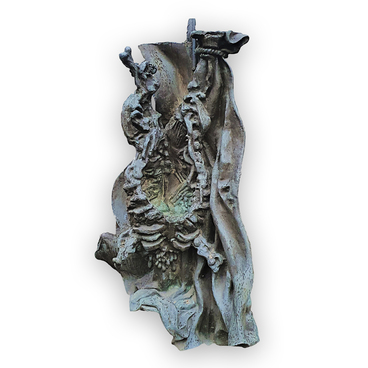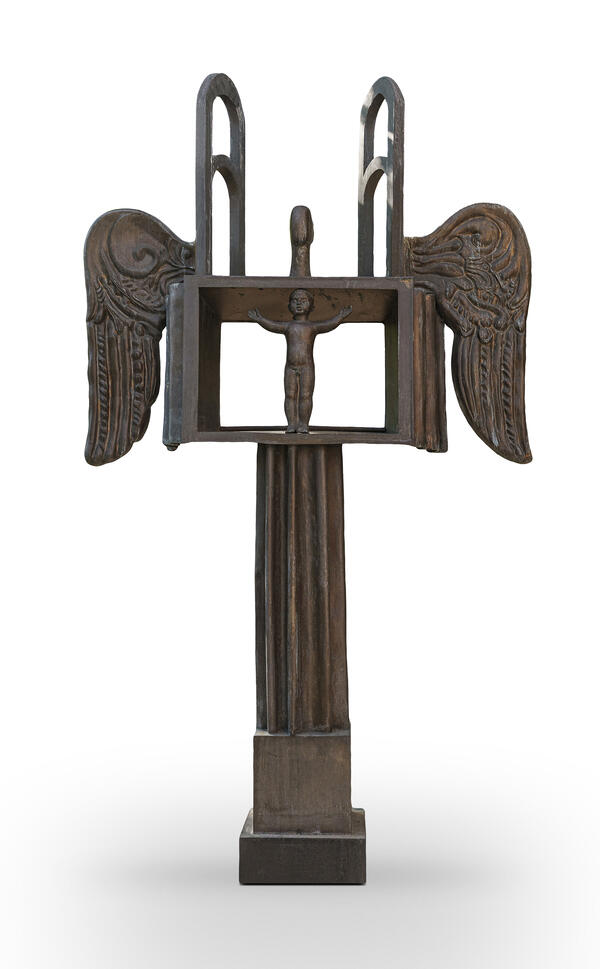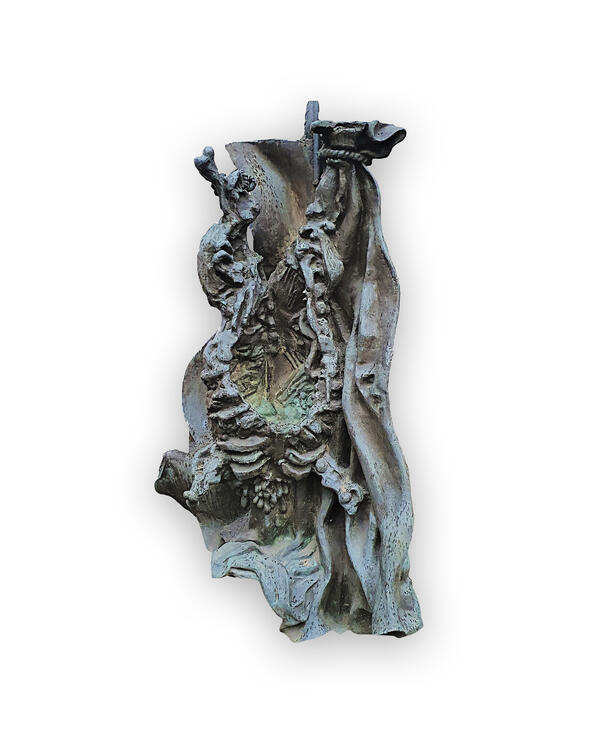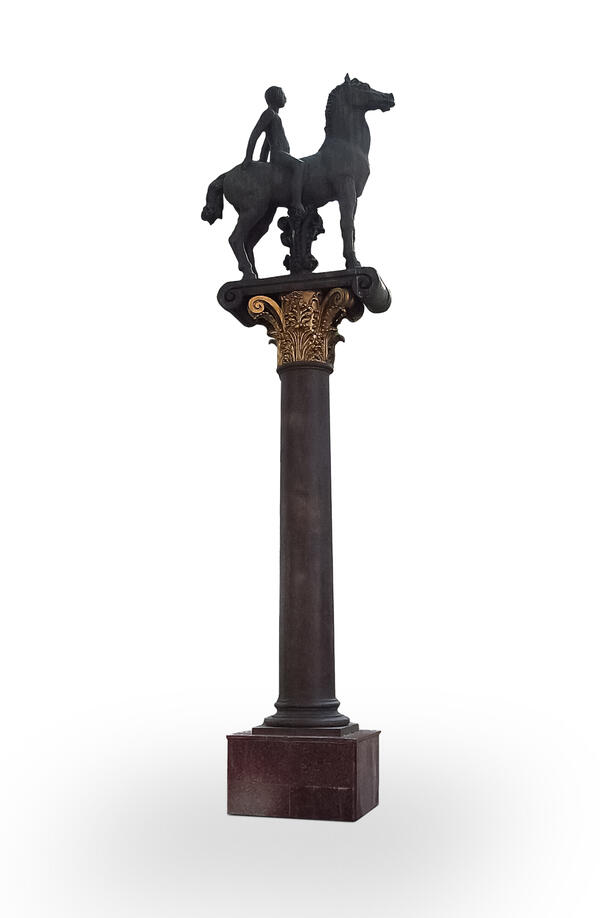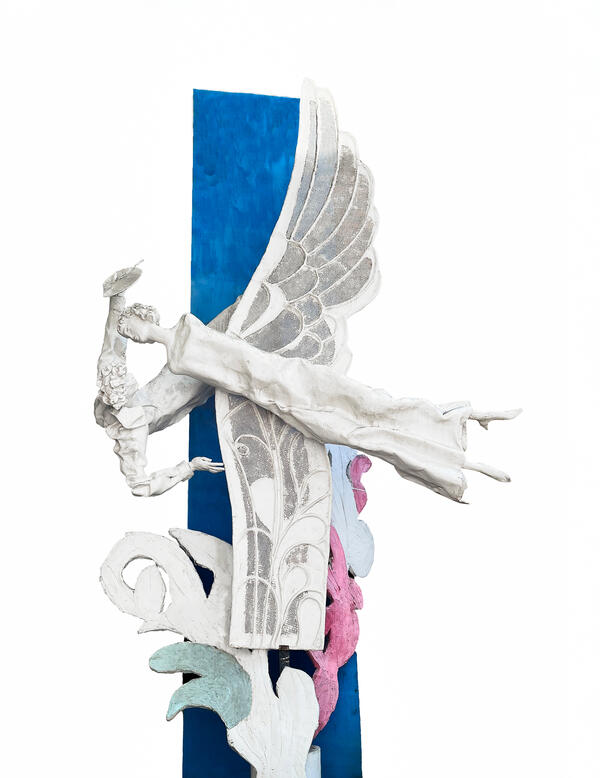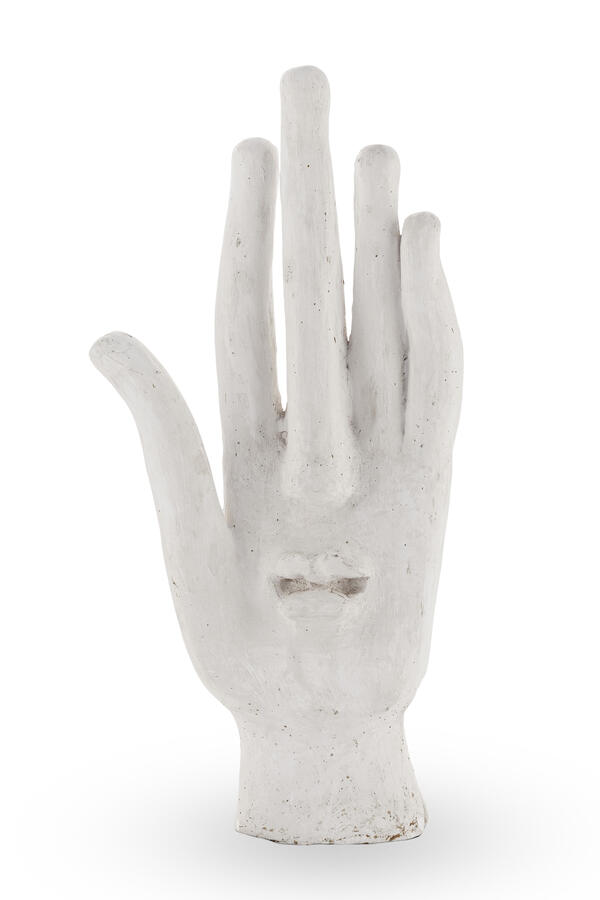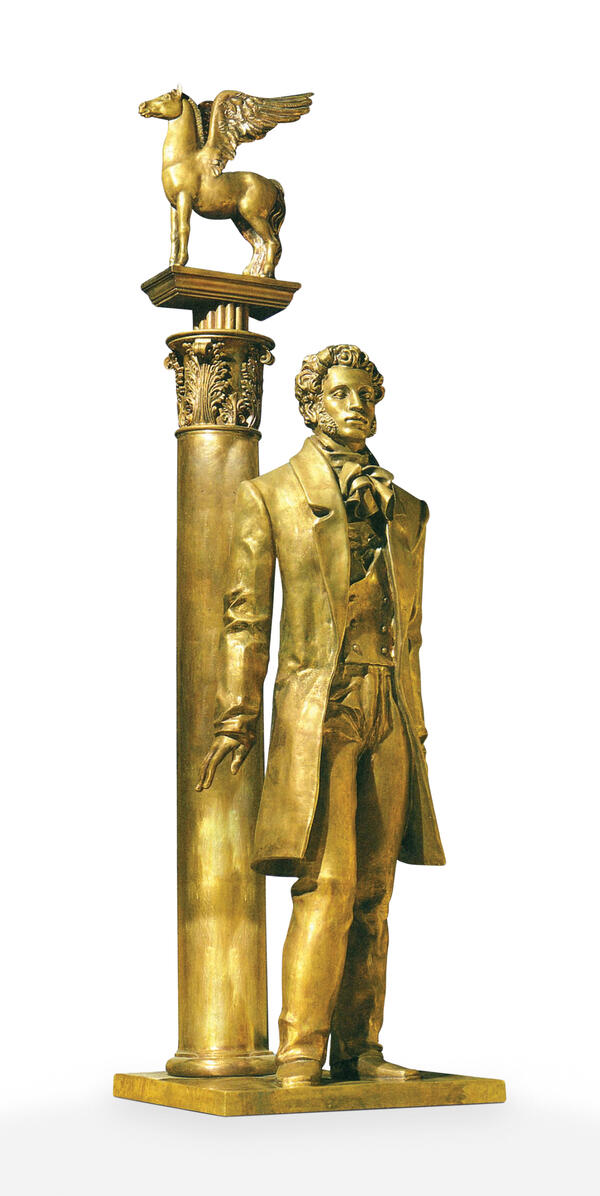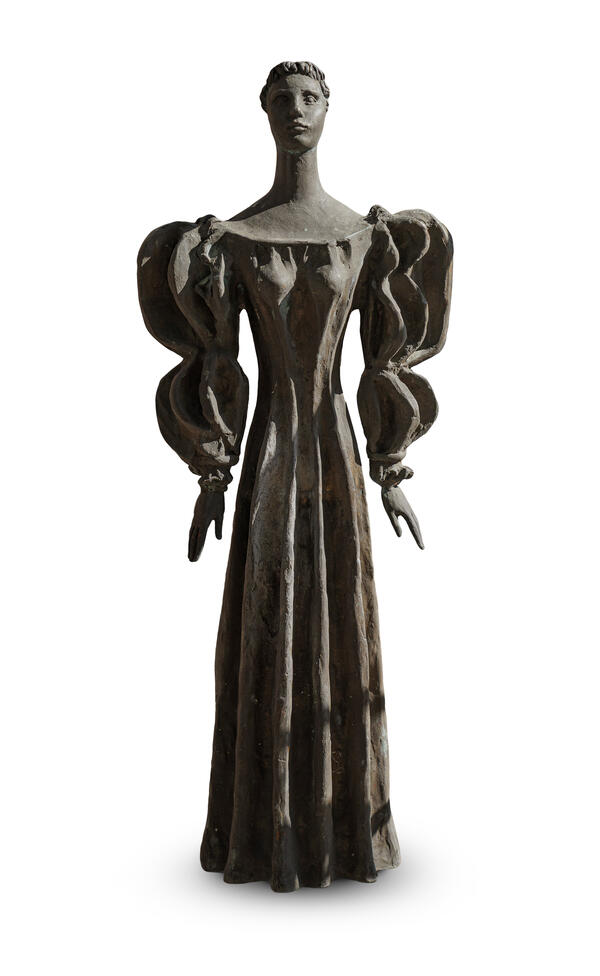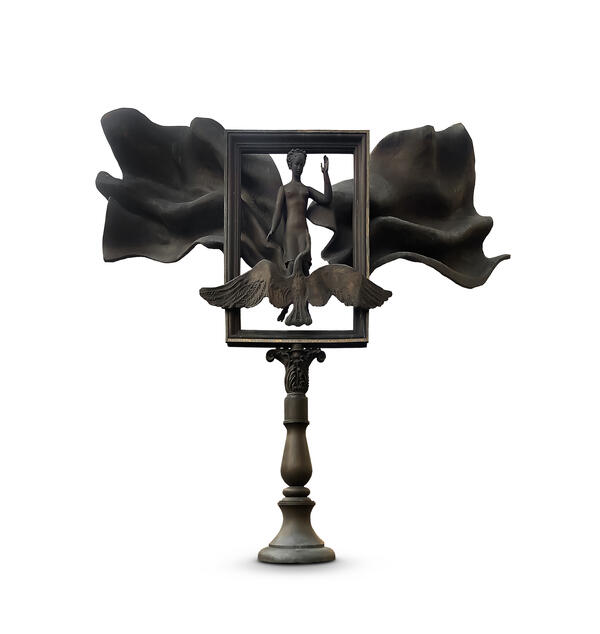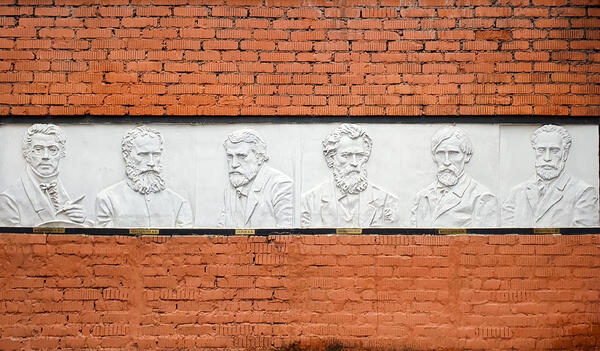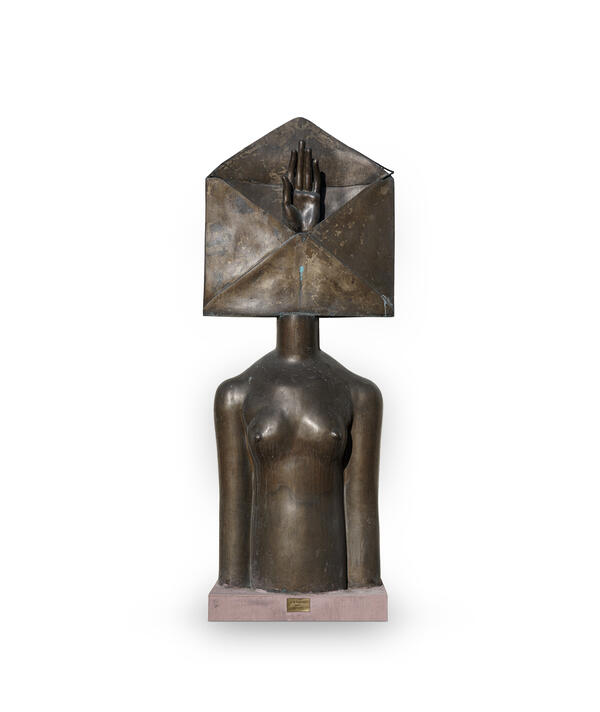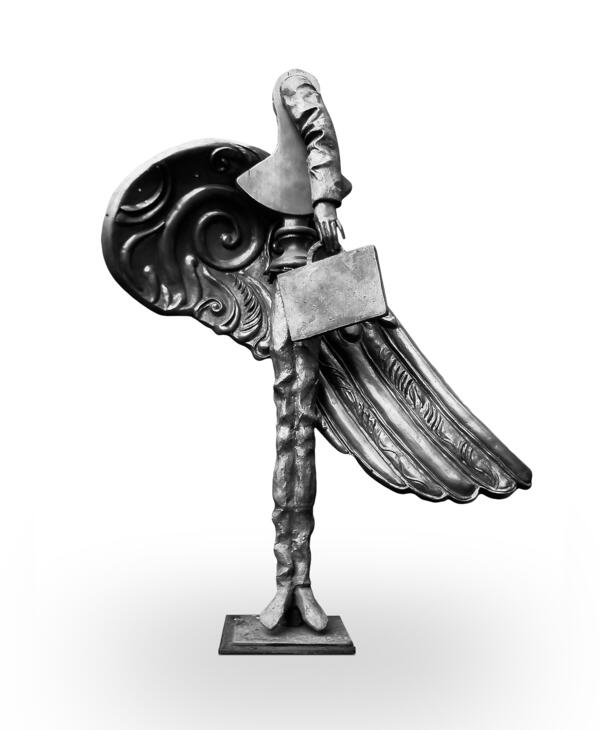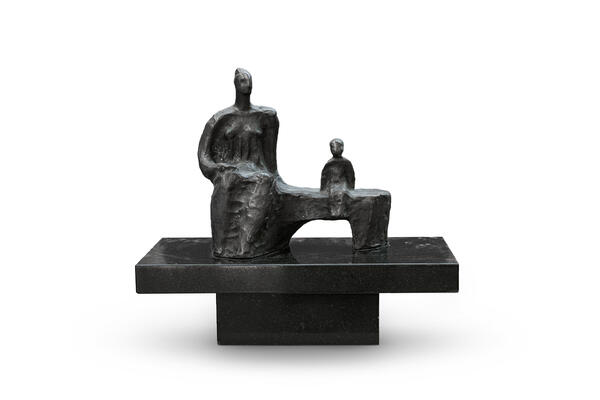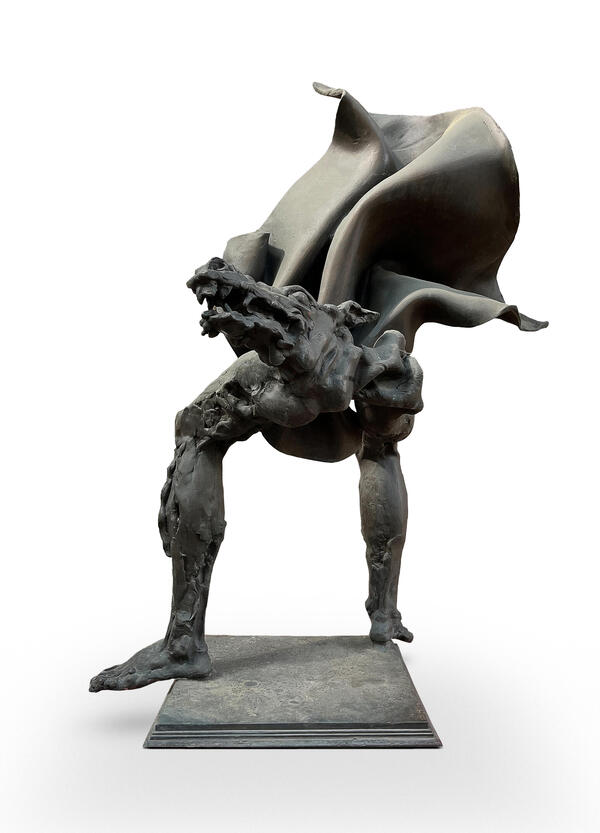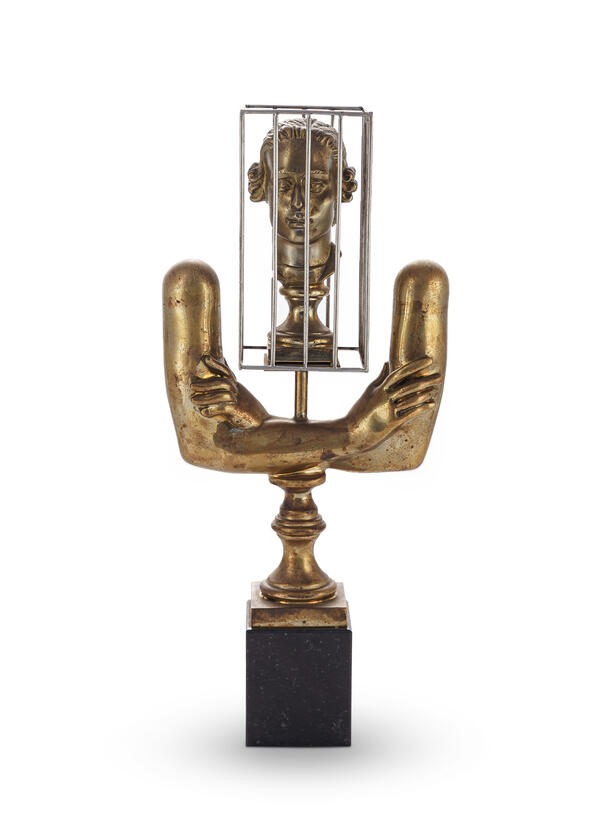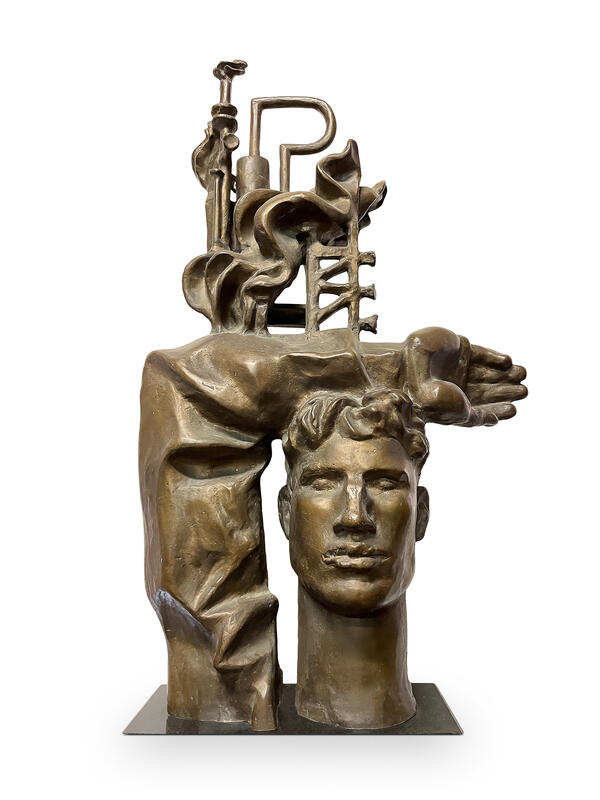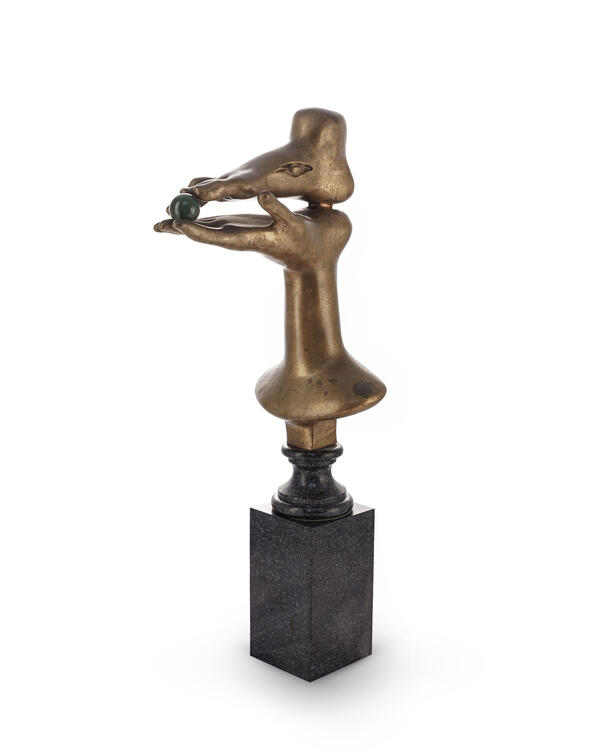The figure of a naked young woman holding drapery in her lowered hands was originally part of the large sculptural composition “War and Peace”, one of the most prominent works created by Alexander Nikolayevich Burganov.
The composition is arranged using a steel cubic cage. Behind the bars, two horses are fighting fiercely. This is a meaningless struggle inside the prison. On top of the cage, there are five small female figures, imbued with tranquility and peace. Like candles, they are located in the corners. The cage is placed on a tall steel column, and, according to the artist’s design, the entire structure symbolizes the world tree.
There are two levels to the composition. The lower level depicts the meaningless fight between the animals, while the upper level represents the Garden of Eden, where beautiful women walk. Beneath them lies the lower world. Together, they symbolize the ever-blooming tree of life with all of its beauty, suffering, and horror.
The sculpture “Naked Woman” is one of five figures that are located on the upper level of the composition.
Despite the universal and even cosmic symbolism of the composition, the sculptor has repeatedly stated that it was inspired by something lyrical and almost intimate. These are the themes of internal suffering, an awareness of the beautiful life around us, and an inability to reconcile the outside world and the inner cosmos of the human soul. The pair of horses engaged in a deadly fight represents the heart of one person, with their struggles and sufferings pushing them toward death, while the beautiful figures above represent their desires, hopes, and illusions that are unreachable because of the steel cage of human existence. Together, they form a lyrical composition shaped by a poet who has grasped the meaning of life.
The composition is titled “War and Peace”, a name that has been widely recognized as one of the most Russian, as noted by Western critics. For many, the title is mostly a reference to Leo Tolstoy’s epic novel. Such associations were also evoked by the grand scale of the sculpture, which exceeded four meters in height.
The composition “War and Peace”
was widely discussed and repeatedly displayed in the USSR. It became part of
the finest Western collection of Soviet art at the Peter Ludwig Museum.


